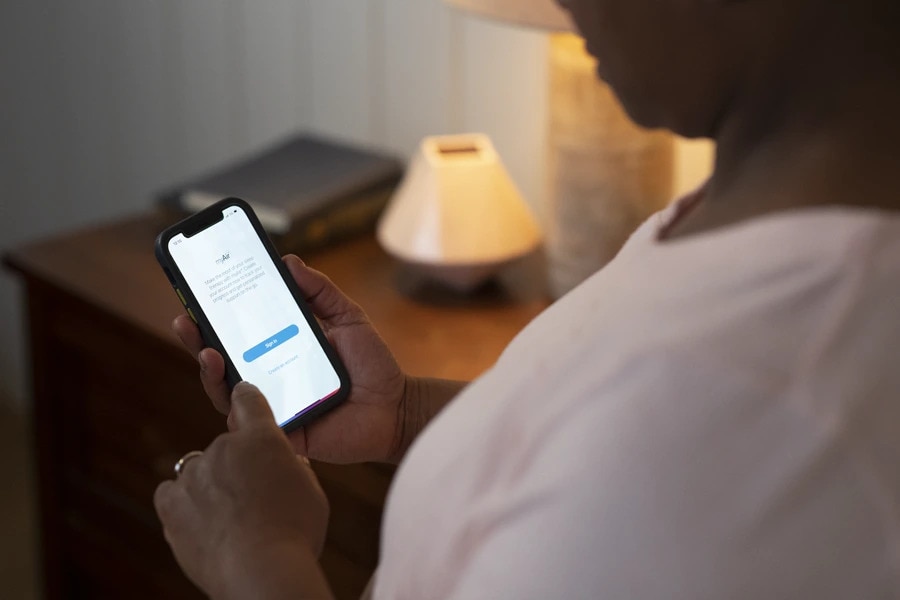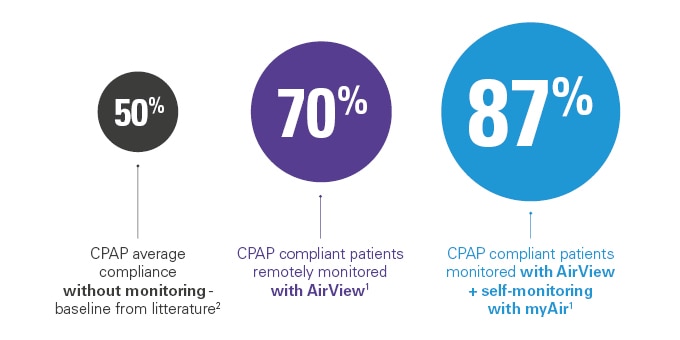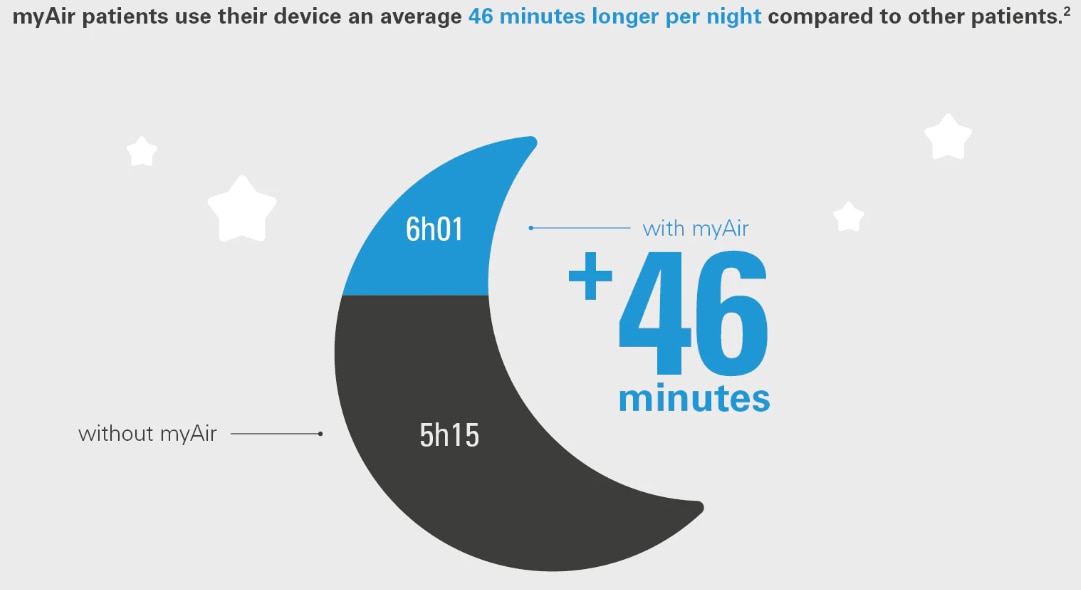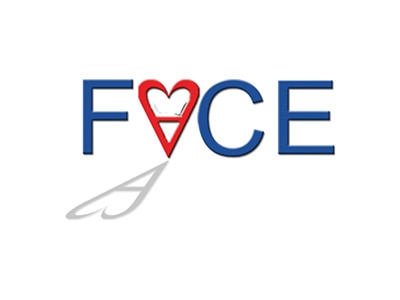Sleep apnoea and digital connected health
A telehealth program for CPAP adherence reduces labour and yields similar adherence and efficacy when compared to standard care.
Munafo D, et al. Sleep Breath 2016.
The study: An evaluation of the effectiveness and coaching labour requirements of a web-based automated telehealth messaging programme compared to standard care in newly diagnosed OSA patients.
Findings: Telehealth programmes can reduce coaching needs while maintaining adherence.
The amount of coaching required per patient was significantly reduced from 58.3 minutes for the standard care group to 23.9 minutes for the telehealth group of patients. The majority of patients in this group stated the new approach met or exceeded their expectations.
Telemedicine-based proactive patient management during positive airway pressure therapy.
Holger Woehrle, et al. Somnologie, January 2017.
Results from Resmed Germany Healthcare, a German home care provider
The study: Data from a large German homecare provider was used to investigate the impact of a proactive patient management programme supported by remote access to PAP therapy data on therapy termination compared with standard care. The proactive strategy used data from AirView. Patients receiving their first PAP therapy were included and analysed in matched pairs, with 3,401 patients included in each group.
Findings: A telemedicine-based proactive management strategy compared with standard care of PAP patients was associated with a lower long-term therapy termination rate.
- In the first year of PAP therapy, the overall therapy termination rate was significantly lower (5.4% vs 11.0%; p < 0.001) and time to therapy termination was significantly longer (348 ∓ 58 vs 337 ∓ 76 days; p < 0.05) in the proactive versus standard care group.
- Cox proportional hazard analysis revealed a significantly reduced risk of PAP termination in the proactive versus the standard care group (hazard ratio 0.48, 95% confidence interval 0.4–0.57).
- Findings were consistent in subanalyses according to gender, type of device and insurance status, and in patients aged ≥40 years. However, in the subgroup of patients aged younger than 40 years, the risk of PAP termination was similar in the proactive and standard groups.
Retrospective descriptive study of CPAP adherence associated with use of the ResMed myAir application.
S Lynch, et al.
Resmed Science Center, Resmed Ltd, Sydney, Australia, 2015.
The study: A Resmed retrospective descriptive study of myAir usage data collected from 2,343 de-identified patient records.
Findings: ResMed’s myAir digital self-monitoring programme was linked to greater CPAP adherence.
- Researchers found that 83.9% of new CPAP users who received standard care and used the Resmed myAir application achieved Medicare adherence in the first 90 days of their treatment.
- Equally impressive, 75.4% of users achieved adherence in 30 days, with a median time to achieve Medicare adherence of 23 days.
Additional Reading
- Wozniak DR, et al. Educational, supportive and behavioural interventions to improve usage of continuous positive airway pressure machines in adults with obstructive sleep apnoea. Cochrane Publication, 2014.
- Konikkara J, et al. Early recognition of obstructive sleep apnea in patients hospitalized with COPD exacerbation is associated with reduced readmission. Hospital Practice, 2016.
- Kuna ST, et al. Web-Based Access to Positive Airway Pressure Usage with or without an Initial Financial Incentive Improves Treatment Use in Patients with Obstructive Sleep Apnea. Sleep, 2015.
Support for investigator initiated research
Resmed believes in the need to support ethical, independent clinical research, conducted by qualified third-party investigators.
*Please note the Narval CC mandibular advancement device is not available in England, Scotland or Wales.
This content is intended for health professionals only. Please refer to the instructions for use for relevant information related to any warnings and precautions to be considered before and during use of the products.
References:
**ASV therapy is contraindicated in patients with chronic, symptomatic heart failure (NYHA 2-4) with reduced left ventricular ejection fraction (LVEF ≤ 45%) and moderate to severe predominant central sleep apnoea.
- Crocker M et al. Patient Engagement Using New Technology to Improve Adherence to Positive Airway Pressure Therapy. Chest, 2016.
- Allen KY et al. The Clinician’s Guide to PAP Adherence. American Association for Respiratory Care, 2009.
- Price Waterhouse Coopers. Empowering the sleep apnoea patient: A study of how myAir users behave better. 2016.









